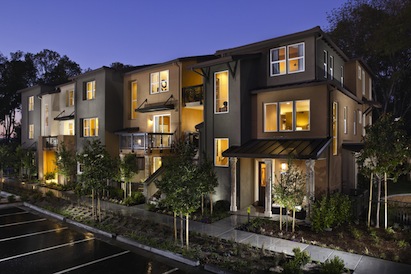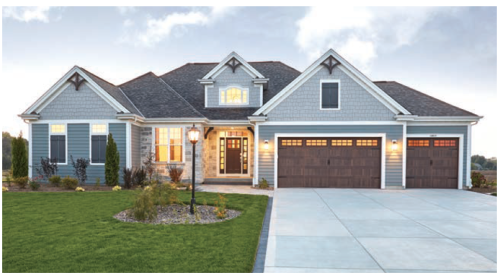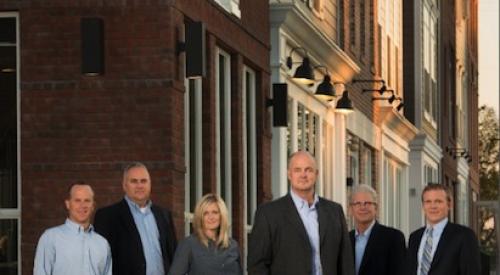Last fall, a president of one of America’s top-20 builders corralled me at a conference. Because I travel this industry about as much as anyone, he likes to pump me for intelligence, as I do him. He wondered: what did I see out there? Who was making it? Who wasn’t? Which markets were ready to emerge and which were not? I gave him my take on things and then he put on his game face and asked, “Who really impresses you? Who truly has the best practices? Where do I go to find the best innovators?”
I said I’d tell him but he wouldn’t believe me, because I knew he was thinking my sources would be big builders similar to his own company in cities like Atlanta, Dallas, and Phoenix. When I told him that to find genuine innovation, I would send him to places like Lancaster, Pa.; Owensboro, Ky.; Lubbock,Texas; Baton Rouge, La.; Birmingham, Ala.; and Red Deer, Alberta, he reacted as if I had just told him I preferred White Castle to Ruth Chris.
Yet I was utterly sincere, and really it should come as no surprise. Although great minds with time to ponder can produce great ideas, the most aggressive innovation occurs when creative force meets crushing need. Although virtually every builder in America experienced crushing need during the years since the crash of 2007, the entrepreneurial spirit and instincts of the strong local builders provide tremendous advantage in supplying creative force.
I liken it to rewiring electrical circuits with the power still on (something I have a bad habit of doing) — it’s highly stimulating. There is no insulation from risk when your personal assets are on the line — not merely those of the corporation. It’s just different, as anyone who has made the switch from corporate life to entrepreneurship can attest. Officers of large corporations who claim genuine entrepreneurial spirit in their company haven’t had much experience as entrepreneurs. In their defense, how could they know?
Housing Giants Report Contents
• Introduction
• Housing Giants Rankings
• 5 Takeaways From the Housing Giants Report
• The Innovators: Great Ideas From the Giants
• Next Move: Giants Share Their Top Opportunities for 2012 and Beyond
• Sales Strategies: What’s Working for the Giants
When your primary concern has to be producing sales and profit numbers that meet the quarterly expectations of stockholders and Wall Street analysts, there is little time left to get creative. Out-of-the-box thinking is rarely rewarded in Fortune 500 companies. As a veteran of three such firms myself, I can report that radical thinking — the kind that produces real innovation rather than mere tweaking of existing systems and practices — often gets you fired.
The fact remains, the primary drivers of innovation in American home building are the strong local builders and a handful of regionals that have fought to maintain their entrepreneurial instincts. In our industry, you’ll find these builders roughly in the 25 to 100 rankings of America’s top builders (see Professional Builder’s 2012 Housing Giants rankings). What follows is a collection of some of their ideas that have worked in this lousy housing economy.
Almost all of these builders are up substantially in 2012 (some as much as 30 percent) and all have survived the housing recession with aplomb. For many of these builders, we could write an entire article about their innovations, but they might balk at giving a comprehensive prescription to their competitors. However, they were gracious enough to give us a look at some of their innovative gems.
1. Warranty techs or customer advocates?
Is your warranty handled by “service techs” whose primary role is to fix stuff after buyers move in and not spend any more time talking with customers than absolutely necessary? Or are your people better described as “customer advocates,” who serve as a key link in the process of building great homes and ensure top customer satisfaction? Ideal Homes of Norman, Okla., changed their culture from “we are just warranty service” to customer advocacy, being the point-men on providing feedback through the product development process, communicating how the customers are living in the houses, and how they are using the features, amenities, and options.
According to Ideal, this has changed the game, and even though they never hide behind a warranty and will go back to fix things five or more years out, their warranty costs are not out of line. With the advent of social media, you simply cannot afford to be on the bad side of the customer and Ideal’s approach produces customer satisfaction at the very highest levels.
2. Spread the sales story out
 For the spring sales season, Charter Homes and Neighborhoods rethought the buyer’s experience when visiting their model homes. With the goal of better engaging buyers, making a strong impression, and providing a deeper demonstration of their products, the Lancaster, Pa.-based builder spread the marketing and sales information throughout the home along a critical path that the neighborhood sales manager leads them through.
For the spring sales season, Charter Homes and Neighborhoods rethought the buyer’s experience when visiting their model homes. With the goal of better engaging buyers, making a strong impression, and providing a deeper demonstration of their products, the Lancaster, Pa.-based builder spread the marketing and sales information throughout the home along a critical path that the neighborhood sales manager leads them through.
The information starts on the sidewalk in front of the house to point out the timeless style included in every Charter design and eventually ends up in the lower level, where the quality of construction and energy efficiency are discussed. The home also includes custom wallpaper printed with homeowner testimonials and a ruler printed on the wall to tell the story of higher ceilings. Instead of being overwhelmed by all the information in the sales center, the customers learn about the builder as they see the product, at a pace they can absorb. The response has been tremendous.
3. Bigger is not always better
Six years ago, high-volume production builder History Maker Homes of Fort Worth, Texas, would not consider any project less than 60 lots. Developments with sites in the hundreds were the norm. During the past year, they have entered infill communities with as few as 18 lots due to location and opportunity to make better margins despite the lower absorption levels.
History Maker’s ability to rapidly develop new product, along with the infill opportunity, has increased both average revenue per sale and gross margin. Always strong in entry-level housing, these projects were launched under History Maker’s new Rendition Homes brand, which targets the first and second move-up markets. As part of this new outlook, they are now developing parcels in 40-lot phases and have found municipalities willing to work with them to re-plat developments into smaller groups of lots. Getting smaller has enabled History Maker to operate better.
4. Just say no to charge-backs
Saun Sullivan, managing member of Professional
Builder’s 2011 Builder of the Year, DSLD, Denham Springs, La., is used to the dumbfounded looks he gets when he tells fellow builders that not only has he never issued a charge-back to a supplier or trade, but his company’s systems are not even capable of generating one.
“It’s simple,” says Sullivan. “Charge-backs kill good will between the builder and the vendor and good will is worth far more than whatever dollars you get back in the short term.
“Once you start charging back,” he adds, “instead of getting the problem fixed immediately then determining the cause to prevent it from happening again, all the energy is spent figuring out who did what to whom, what it cost, and where to pin the blame. The vendor then focuses on all the times the builder cost his company something, and vendors usually have better memories than we do. Now they look for opportunities to make it up. When something goes wrong out there, I don’t want time spent covering up. Call us. Tell us what happened. Let’s get it fixed. Now let’s determine how to prevent it going forward.”
This is part of the philosophy that enabled DSLD to grow from zero to 700-plus units in three years. Their suppliers and trades are fiercely loyal. I have seen other builders grow that fast and the typical result is burnt-out staff, frustrated vendors, and angry customers. But DSLD is one of the top performers in virtually every customer satisfaction category, according to Charlie Scott of Woodland, O’Brien and Scott.
5. Join someone else’s parade
Lloyd Poe, president of Lifestyle Builders and Developers in the Richmond, Va., markets, always volunteers to judge Parade of Homes and Homearamas put on by home-building associations from neighboring towns outside his market. As a judge, he is required to go through a structured process to evaluate each home and assign a numerical score to that entry. That process requires Poe to study those homes in great detail.
“It also exposes me to new floor plans, creative elevations, and great kitchen and bath layouts,” he says. “Most jurisdictions let the judges take pictures, so I come away with a permanent record of what I saw. In some cases, when I’m impressed with a certain plan, I later call the builder and find out if that plan was the builder’s best-seller and why.”
What a great way to help out a neighboring HBA/BIA and get invaluable marketing insights along the way.
6. Get lean, be green, sell homes, make money
O’Brien Homes knew that for their new Fusion Townhouse project in Sunnyvale, Calif. (the heart of Silicon Valley), it was critical to have a price advantage without compromising the quality, look, feel, or features. Having heard TrueNorth Development’s Lean Building presentations at PCBC, the Foster City, Calif.-based builder decided to apply Lean techniques to Fusion even prior to completion of the final drawings. This process both reduced cycle time and cut cost by $30 a square foot compared to the competition. In California, these seven-unit buildings typically take eight months to build, including inspections and structural and energy requirements. O’Brien now has the build cycle down to 6.5 months while maintaining the highest quality.
Lean actively engages the suppliers and trades, gaining their full buy-in. Working together and thinking Lean, they have been able to raise their green rating far beyond Sunnyvale’s “Build it Green” requirement of 70 points, to a score of 121, without increasing cost. As a result, buyers are lining up to buy into the Fusion project.
7. Drive free for a year — really
So much about sales and marketing is tying into a customer need — find out where they have pain and offer them a remedy. But that need does not have to be the house itself.
As fuel prices continue to climb, Keystone Custom Homes of Lancaster, Pa., identified an opportunity to meet potential clients right where they are so often — at the gas pump. As an offshoot to their successful “Live Free for a Year. Really” campaign, this initiative took the message beyond the traditional billboards and directional signs and put it right next to the gas pump handle.
Advertisement decals are placed on more than 700 gas pumps throughout Keystone’s market area. Home buyers, and those that recommended them, receive a $1,000 gas card upon settlement of their home. The gas stations love it because it drives people to their pumps and provides free advertising. This marketing strategy has been immensely successful and has resulted in increased sales, a higher referral rate, and top-of-mind brand awareness. Free gas is a good thing. Really.
8. Sell lifezones instead of options
In 2006, Austin, Texas-based Grand Haven Homes (GHH) opened in an Austin market dominated by public builders with big wallets, big appetites for land, and a housing bubble about to burst. They knew something truly unique was needed to draw buyers away from the myriad of communities offered by public builders. So GHH launched a marketing strategy with four product lines in four very different submarkets, priced from the low $200,000s to the $600,000s.
The management team, originally from a large regional builder gone public builder, believed its 78 years of collective experience backed by a proven track record with local suppliers and trades was a big advantage over typical big builders who GHH expected to retreat when the market shrank. The builder anticipated big discounting with a fence-sitting attitude by consumers voicing, “I will buy, if I get it my way.”
These exceptional supplier/trade relationships opened the door to GHH’s change in perspective that all product be created from what the consumer sees at retail — TV, magazines, decorating stores, custom home shows, etc. They saw a market for the builder who designed these consumer trends down into the product instead of first designing the product and then applying a haphazard arrangement of products with a hit or miss on the current consumer trends. GHH also recognized several timeless, emerging areas of the home where these consumer trends could be deployed. The Lifezone concept was born.
GHH contrasts Lifezone to how most builders segment product toward price points and buyer demographics. The typical builder has a product line with five floor plans running from 1,700 to 2,800 square feet, then decides the kitchens and cabinets for each based on the budget target for that plan. In an entry-level plan, the builder then adds usual upgrades, such as a better dishwasher or a self-clean oven. For the second move-up, add a higher-level, built-in kitchen. For the luxury price point, add a professional-style kitchen. The customer has to fit into the box defined by the builder and cannot get the pro kitchen they want at the lower price point, so they sit on the fence.
The Lifezone concept was created after an IBS booth visit provoked discussions on the new consumer trend of “cooking centers.” That thought progressed to the “missing customer” and how kitchens could be delivered as move-up option packages at any price point or floor plan. GHH and a cabinet company began with the largest cooking appliance and designed a standardized cooking center. They locked down the design template that could be dropped into any kitchen plan, without the brain damage associated with the custom option process. It then became simple to change the dimensions of select cabinets in the cooking center to accommodate the commodity price point of a 30-inch range, along with the 10 different kitchens that resulted from GHH’s brainstorming and design efforts. The resulting Lifezone Kitchen Solutions program thus targets not only price point, but a lifestyle choice. The buyer that wanted the $250,000 home but only with the professional kitchen typically found in a $400,000 home could now be met, sold, upgraded, and happy.
Reduce house cost by $30 a square foot and cycle time in six weeks? Eliminate charge-backs? Offer a 48-inch pro range in a $250,000 home? These are the kind of innovations that emerge from highly focused entrepreneurial builders that encourage out-of-the-box thinking. In the June edition of Professional Builder, we will look at another group of innovations from builders of a like mindset. Even if you convince yourself that some of these ideas won’t work for you, get your people together, read through them, and discuss each one in detail. I’ll give you odds that the process will produce your own set of innovations that will make a difference this year.
Scott Sedam is president and founder of TrueNorth Development. His articles appear monthly in Professional Builder and his Lean Building Blog appears each Tuesday on www.HousingZone.com. Sedam welcomes your questions and feedback at scott@truen.com and encourages budding “Leanistas” to join the LeanBuilding Group on www.Linkedin.com.














